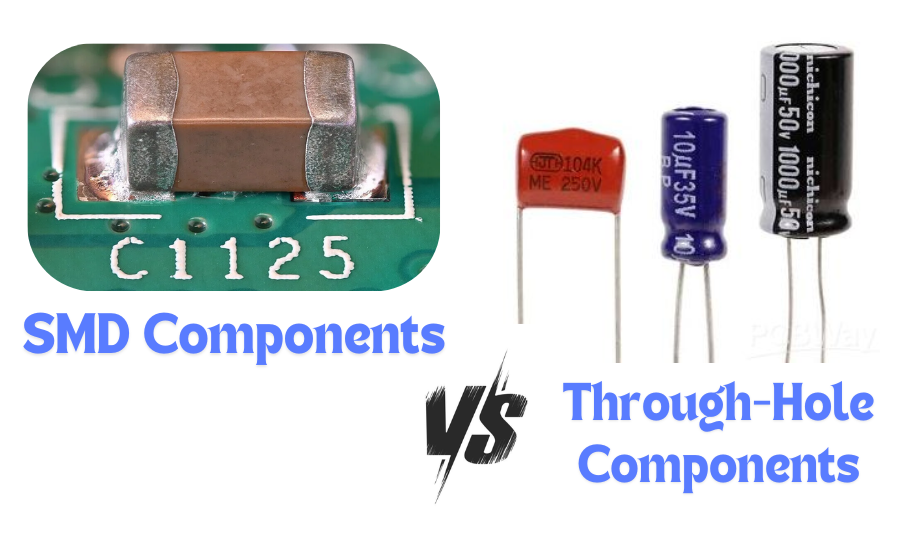Electronic components come in many sizes and shapes. There can be different versions of even the same type of IC. When adding these components to a PCB, there are two main ways to do it: Surface Mount Technology (SMT) and Through-Hole Mounting (THM). Each component must be matched to one of these methods to be used properly. Engineers and designers choose between SMD and Through-Hole components based on their needs.
Before we look at the difference between SMD and Through-Hole components, let’s first understand these mounting methods.
What are Through-Hole Components?
Through-hole mounting refers to placing components in small holes on a PCB. Through-hole components have metal pins that go into these holes and are then soldered in place. The distance between the pins is usually large, making it easier to place by hand. Through-hole components, such as through-hole resistors, are typically used in designs that require strong and stable connections.
What are SMD Components?
SMD stands for Surface Mount Device. These components sit directly on the PCB surface and are soldered without holes. One of the main differences between SMD and through-hole components is that SMD components help save space. Most modern electronics use SMD components, including SMD Resistors and SMD capacitors, which are small and allow for compact designs.
Features of Through-Hole Components
Stronger Connections: Through-hole components connect more securely than SMD components, making them ideal for high-power components such as transformers, batteries, and connectors.
Better for Multi-Layer PCBs: Their pins go through the PCB and connect all layers, reducing the need for additional vias.
Easier to Test: Through-hole components fit into breadboards, making them ideal for testing and prototyping.
Easy to Repair: These parts can be easily removed, making maintenance and repairs much easier.
Handles More Stress: Through-hole parts hold up better in tough conditions and can take more physical force.
Good Thermal Management: Their larger size helps them handle heat better.
Low Cost: They don’t require expensive PCB finishes, making them a budget-friendly choice.
Handles More Power: They work well in high-power circuits because they can handle more voltage and current.
Takes Up More Space: Because their pins pass through the board, no parts can be placed underneath them.
Difficult to Automate: These parts can be added using machines, but some manual work is still required.
Large in Size: Their larger size makes them difficult to use in small designs.
Features of SMD Components
Small and Compact: SMD parts are small, making them great for small and dense PCB designs.
Saves Space: Unlike through-hole parts, SMD parts can be placed on either side of the PCB.
Better for High-Speed Signals: They have less exposed metal, so they work well for fast signals and high-frequency applications.
Works With Machines: SMD parts are easier to automatically solder, making them better for mass production.
Not for Heavy Parts: Large components should not be SMD because they cannot be protected.
High Manufacturing Costs: SMD parts may require special PCB coatings, which can increase costs.
Less Durable: These parts can break more easily if the PCB is subjected to physical stress.
Limited Power Handling: Small SMD parts may not work well for high-power circuits.
Difficult to Test: SMD parts do not fit on a breadboard, so additional equipment is required for testing.
Limited Repairability: Once soldered, removing SMD parts can damage the PCB, making repairs difficult.
Conclusion
The choice between SMD and through-hole parts depends on the project. Through-hole parts provide stronger connections, making them good for power-heavy applications. SMD parts save space and work better for modern, high-speed designs. Understanding these differences will help you choose the parts for your PCB projects.
Read Next: Key Considerations for Medical-Grade Power Supplies
